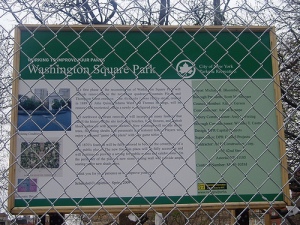Recycled Entry : Originally Published May 7th, 2008
The term Business Improvement District – in short, BID – sounds so benign. Businesses improving their districts ought to be a good thing, right? However, the BIDs, as artist and activist Robert Lederman explores in his piece below, don’t just stay on their side of the street. In CEO Mayor Bloomberg’s New York, their tentacles spread far and wide, amidst the roots of the trees, up through the dirt or concrete, and busting out into our public spaces.
In the last few weeks at Union Square Park, the street artists who display their art have been harassed by Parks Department police. When Lederman sat down with Parks Department officials to question them about this, the Parks Department said there was no change in policy towards the artists at Union Square.
Lederman writes, “This and anecdotal evidence … seems to indicate that it was The Union Square Partnership BID which was directly responsible for ordering the recent harassment, intimidation and attempted eviction of artists from USP. This makes sense since the Park Enforcement officers are paid by the BID and apparently, now take their orders directly from them.”
Lederman continues, “Here is a perfect example of the sinister nature of how privatization works:
A NYC Agency (The Parks Department) in charge of public property held in trust for the people of NYC (all the NYC Parks) turns over daily operation of each park to a BID (Business Improvement District). The corporate- owned media (which are leading board members of all the BIDs) cheerleads for this as a great service to NYC.
Unlike the officials who run NYC agencies after being appointed by an elected Mayor, the real estate and business interests that run the BID do not swear to uphold the Constitution; they have no interest in defending civil liberties; they are unelected and unaccountable. Unlike the Parks Department officials, (more…)











